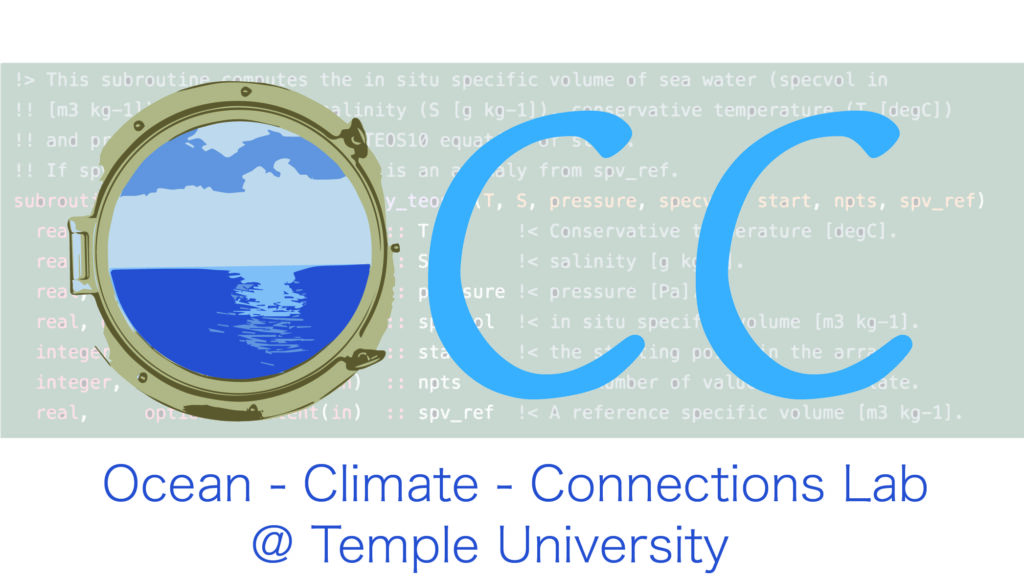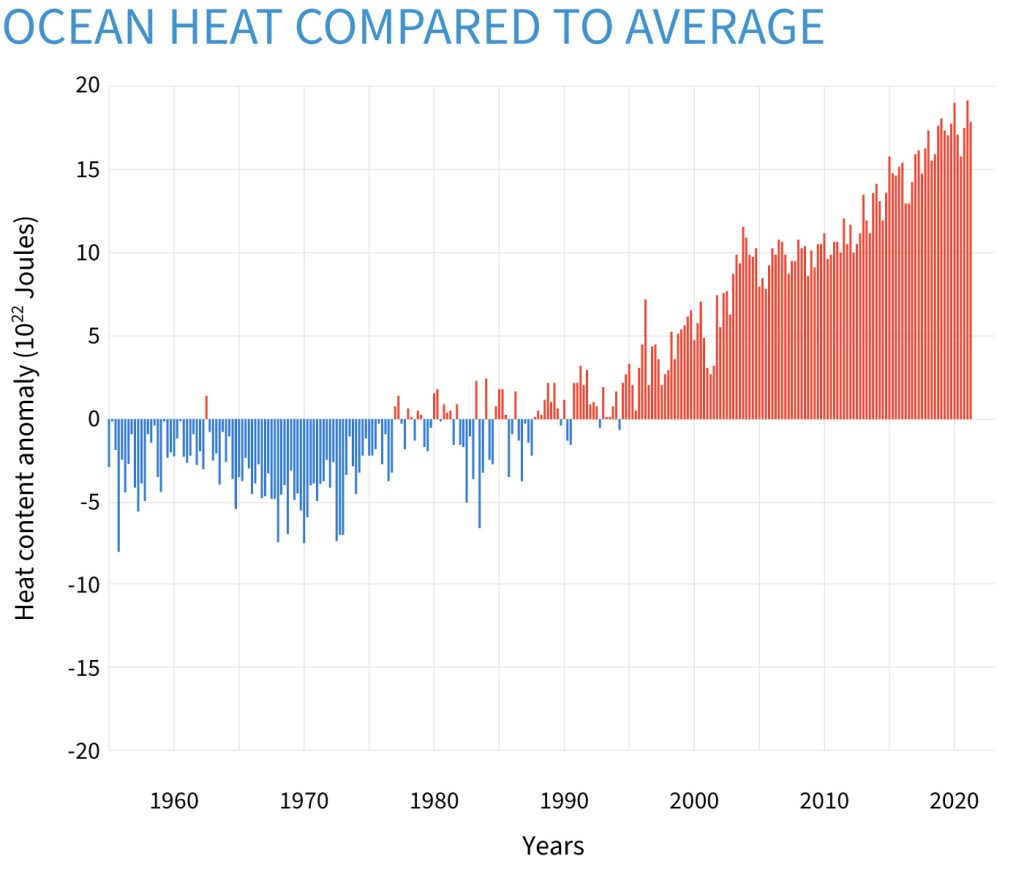
As atmospheric greenhouse gas concentrations increase, more heat is trapped on our planet than is allowed to radiate back to space. Observations over the last 50 years indicates that over 90% of this excess heat has gone into our ocean. Additionally, the ocean is responsible for absorbing ~25% of human caused CO2 emissions. Our ocean is clearly doing us a service by acting as a sink of excess heat and carbon, reducing the amount of global warming we “feel”.

However our ocean is not just a static body of water with an endless capacity to suck up all the anthropogenic heat and carbon – these services come with consequences for terrestrial (including us!) and marine ecosystems. In the Ocean Climate Connections lab at Temple University, our work centers on understanding the role that the ocean plays in the climate system, how large scale ocean circulation and properties are changing now and are projected to evolve throughout the 21st century as the climate warms, coupled interactions between the ocean and the rest of the climate system, and the consequences associated with change in the ocean’s state. To answer these questions, we use a combination of observations and state-of-the-science fully coupled climate model simulations. We not only use climate model simulations as a means to understand how ocean processes are projected to evolve, but we use our knowledge of observations and numerical simulations to interrogate model simulations on how well they represent present day ocean circulation and properties – work that is vital for model development efforts and increasing confidence in model projections.
Given the disproportionate role that the global ocean south of 30 degrees south, aka the Southern Ocean, plays in the global climate system, much of our research is centered on understanding Southern Ocean dynamics and their response under continued warming. Due to its unique and complex circulation, the Southern Ocean accounts for the overwhelming majority of oceanic heat and carbon uptake and is responsible for the fertilization of over 75% of global marine productivity. The Southern Ocean also exerts a strong control on the evolution of the Antarctic Ice Sheet, with ocean circulation patterns and properties determining the rate of basal melting of adjacent ice shelves and thus influencing present and future sea level rise. Understanding how the Southern Ocean has changed in the past, is changing now, and how it will evolve throughout the 21st century and beyond is critical to understanding the state of our climate system. What happens in the Southern Ocean, does not stay in the Southern Ocean – we aim to build a strong understanding of the global influence of remote processes occurring in this key region.